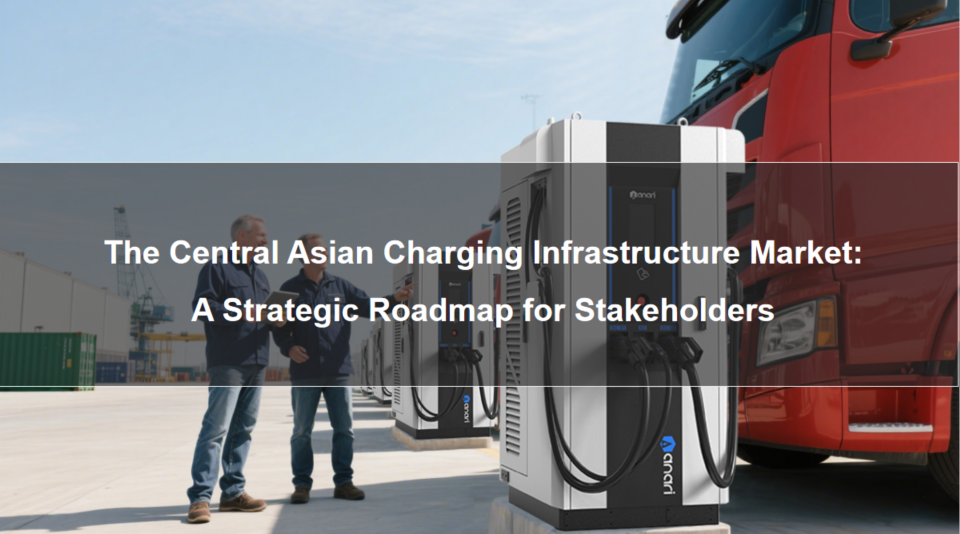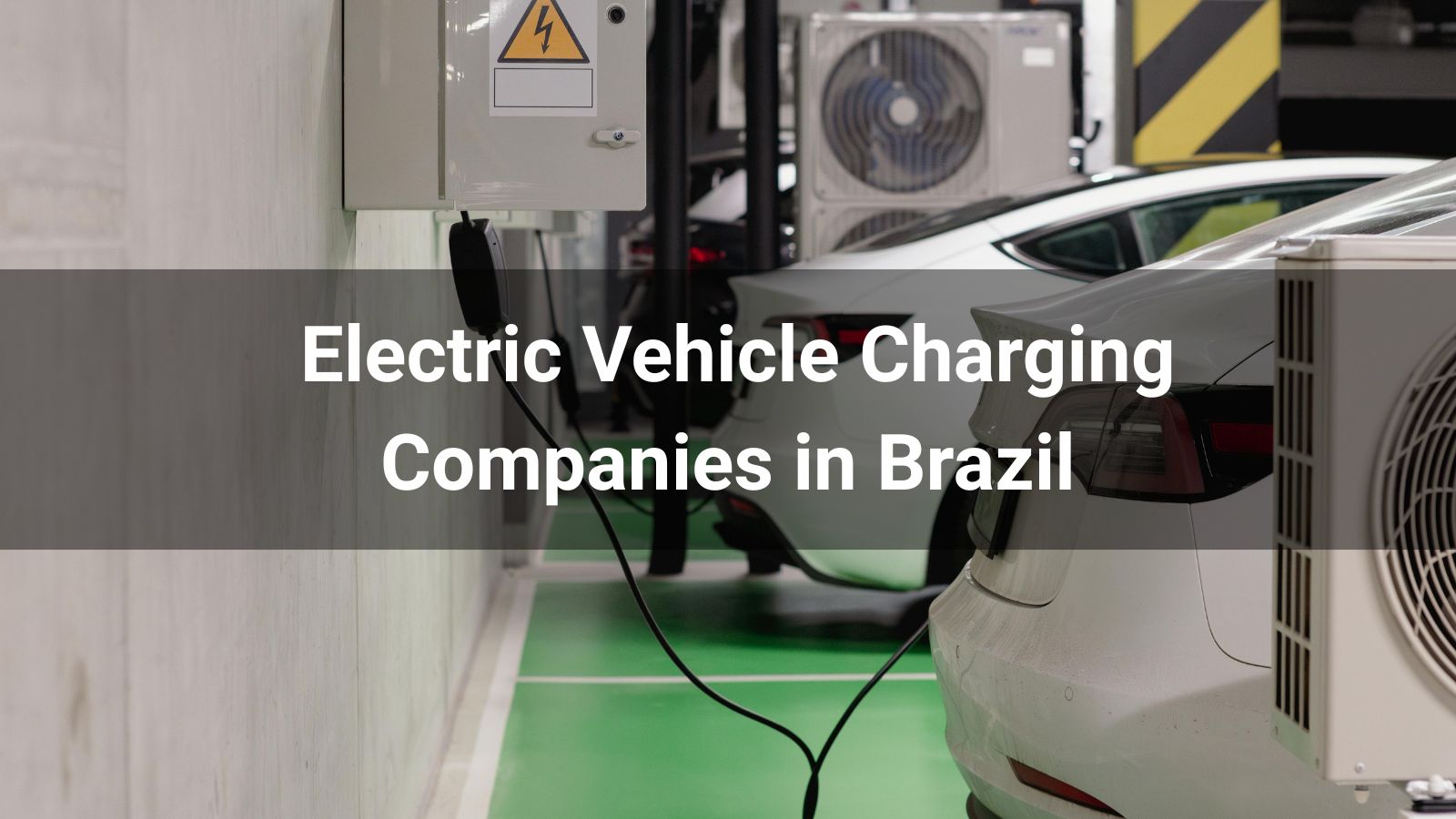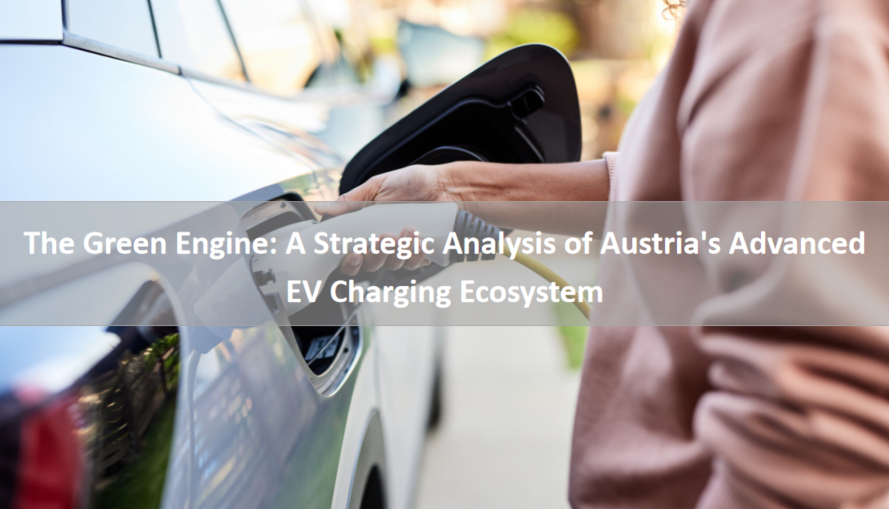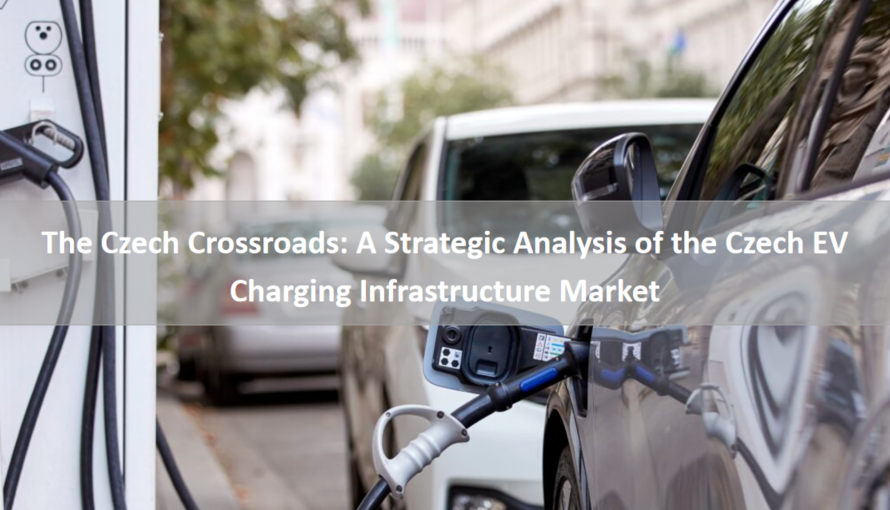
Executive Summary
The Central Asian region, long defined by its hydrocarbon resources, stands at the precipice of a transformative energy and mobility revolution. Driven by global decarbonization trends, regional economic diversification strategies, and the pressing need to modernize urban transport, the Electric Vehicle (EV) market is transitioning from a niche concept to a strategic priority. This report analyzes the ensuing charging infrastructure ecosystem, which presents a complex but highly lucrative landscape for early-moving stakeholders.
Our analysis reveals a market characterized not by uniform growth, but by distinct, parallel demand archetypes: Urban Electrification, Transit & Logistics Corridors, and Resource-Driven Industrial Electrification. Success in this market requires a segmented, phased approach to infrastructure deployment. The current state of charging station distribution is nascent and fragmented, creating a first-mover advantage for operators and technology providers who can navigate the unique regulatory and grid challenges. Anari Energy, with its global expertise and robust, adaptable product portfolio, is positioned to be the strategic partner for Central Asian stakeholders in building a future-proof, efficient, and scalable charging network over the next decade.
1. Development of the EV Market in Central Asia
The EV narrative in Central Asia is not a single story but a collection of national journeys, each at a different stage and driven by unique catalysts. Understanding these nuances is paramount for any market entrant.
1.1 Kazakhstan: The Regional Frontrunner
Kazakhstan has emerged as the undeniable leader in the region's EV adoption. The government has implemented a multi-pronged strategy:
· Fiscal Incentives: A zero customs duty policy on EV imports until 2025 has significantly reduced the upfront cost barrier, leading to a surge in vehicle acquisitions, particularly from China and Europe.
· Industrial Policy: The establishment of local EV assembly plants (e.g., with Chinese OEMs) signals a long-term commitment to building a domestic EV ecosystem, not just importing finished goods.
· Data-Driven Growth: Official statistics show a compound annual growth rate (CAGR) of over 150% in EV registrations since 2020, albeit from a low base. This explosive growth is concentrated in Almaty and Nur-Sultan, creating immediate, dense demand nodes.
1.2 Uzbekistan: The Planned Powerhouse
Uzbekistan is pursuing a state-led, industrial approach to EV development.
· Domestic Production Focus: The UzAuto Motors plant, in partnership with Chinese EV manufacturers, aims to produce hundreds of thousands of EVs annually, primarily for the domestic market. This strategy will inevitably create a captive and rapidly expanding demand for charging infrastructure.
· Public Transport Transformation: Tashkent and other major cities have initiated ambitious programs to electrify municipal bus fleets, representing a high-utilization, predictable demand segment that is critical for anchoring initial charging investments.
1.3 Kyrgyzstan, Tajikistan, and Turkmenistan: The Nascent Markets
These markets are in earlier stages but present unique opportunities.
· Kyrgyzstan and Tajikistan: Their EV markets are currently driven by the import of used, lower-cost EVs. The primary catalyst is economic—lower operational costs compared to internal combustion engine (ICE) vehicles—rather than robust government policy. This creates an organic, bottom-up demand, particularly for affordable AC charging solutions.
· Turkmenistan: Possessing vast natural gas reserves, the country's motivation is different. The potential for EVs lies in freeing up natural gas for more profitable export markets by reducing domestic consumption in transport. While policy action is slow, the underlying economic incentive is powerful.
The Central Asian EV market is not a monolith. It is a patchwork of state-led industrialization (Uzbekistan), market-liberalization (Kazakhstan), and economically-driven organic growth (Kyrgyzstan/Tajikistan). A successful market strategy cannot treat the region as a single entity.
2. Insights into EV Charging Demand in Central Asia
Moving beyond vehicle numbers, the true market opportunity lies in understanding the nuanced demand for charging. We segment this demand into three distinct archetypes.
2.1 Archetype A: The Urban Congestion & Air Quality Solution
· Location: Major metropolitan centers like Almaty, Tashkent, Nur-Sultan.
· Demand Driver: High population density, severe traffic congestion, and deteriorating air quality are forcing municipal governments to act. The focus is on light-duty passenger vehicles and, critically, the electrification of public transport (e-buses) and taxis.
· Charging Profile: This segment demands a mix of Destination Charging (slow to mid-power AC chargers at shopping malls, offices, apartments) and Depot Charging (high-power centralized charging for e-bus and taxi fleets overnight). Reliability and smart management systems are key to preventing grid overload during peak hours.
2.2 Archetype B: The International Transit & Logistics Corridor
· Location: Key highways such as the Western Europe-Western China International Transit Corridor, connecting China to Europe via Kazakhstan.
· Demand Driver: Central Asia's geographic position as a land bridge is its strategic advantage. The electrification of long-haul trucking is a global trend, and Central Asia must prepare or risk being bypassed. This also serves domestic inter-city travel.
· Charging Profile: This segment is the exclusive domain of High-Power Charging (HPC) stations—150kW and above. These stations must be strategically located at 150-200km intervals along major routes and be equipped with robust amenities (driver rest areas, cafes). They require ultra-reliable equipment capable of harsh weather conditions and high utilization rates.
2.3 Archetype C: The Resource & Industrial Cluster
· Location: Mining regions in Kazakhstan, industrial zones in Uzbekistan.
· Demand Driver: The economic imperative for mining and industrial companies to reduce operational expenditures. Electrifying heavy-duty mining trucks, loaders, and other industrial vehicles within a controlled site offers a rapid return on investment due to lower fuel and maintenance costs.
· Charging Profile: This demands highly specialized, ruggedized High-Power DC Chargers designed for 24/7 operation in extreme environments. Modularity is critical, allowing for power scaling to meet the immense energy needs of a single mining truck (which can exceed 1MWh battery capacity).
The "one-size-fits-all" charging station is a recipe for failure. The market demands a portfolio of solutions tailored to these distinct use-cases. A provider like Anari Energy, which offers a range from robust AC wall boxes for urban depots to modular HPC stations for highways and ruggedized solutions for mines, can serve the entire market spectrum effectively.
3. Distribution Characteristics of Charging Stations in Central Asia
The current distribution map of charging stations reflects the early, fragmented stage of market development.
· Hyper-Concentration in Capitals: Over 80% of publicly known charging points are located in the capital cities and primary economic hubs (Almaty, Nur-Sultan, Tashkent). This creates "charging oases" while leaving vast corridors and secondary cities unserved.
· The "Shell Station" Phenomenon: Many early installations have been standalone units, often lacking the necessary grid upgrades, convenient amenities, or integrated payment systems. This undermines user confidence and stalls adoption.
· Fragmented Ownership: The landscape is a mix of state-owned energy companies testing the waters, small private entrepreneurs, and automaker-specific installations (e.g., BYD). There is a notable absence of large, specialized charging network operators, leading to a poor user experience with multiple apps and memberships.
· Grid Constraints as a Silent Limiter: The most significant bottleneck is not demand but grid capacity. Many potential high-demand locations lack the electrical infrastructure to support multiple HPC stations without significant and costly upgrades.
The current distribution is a lagging indicator, showing where early, low-hanging fruit was available. The future network must be proactively planned based on the demand archetypes outlined above, not reactively built where it is easiest. Strategic partnerships between charging providers, grid operators, and real estate owners are essential to overcome these initial hurdles.
4. Charging Station Layout Plan for Central Asia in the Next 10 Years
Building a cohesive and financially viable charging network for Central Asia requires a phased, three-stage approach over the next decade.
Phase 1: Foundation Building (2024-2027): Anchor Demand and Prove Viability
· Focus: Deploy infrastructure in Archetype A (Urban) and Archetype C (Industrial) locations.
· Rationale: These segments offer predictable, high-utilization demand. Installing depot chargers for municipal e-buses and corporate fleets guarantees usage. Deploying chargers in mining operations provides immediate ROI for industrial clients. This phase de-risks initial investments and builds operational experience.
· Action Plan:
Partner with city municipalities for e-bus depot charging.
Target industrial and mining companies with tailored, ruggedized charging solutions.
Deploy destination AC chargers in high-traffic urban centers.
Technology: Focus on reliable, smart AC chargers and depot-focused DC chargers. Products like the Anari PowerDome Depot Charger, with its scalable power and remote management capabilities, are ideal for this phase.
Phase 2: Corridor Connectivity (2028-2030): Linking the Hubs
· Focus: Systematic development of Archetype B (Transit Corridors).
· Rationale: With a stable revenue base from Phase 1, operators can invest in the more capital-intensive highway HPC stations. By this time, the number of EVs capable of long-distance travel will have reached a critical mass.
· Action Plan:
Conduct a detailed feasibility study for the top 3 transit corridors.
Form consortiums with logistics companies, fuel station operators, and government agencies.
Deploy HPC hubs at strategic intervals, complete with amenities.
Technology: Deploy future-proof HPC stations starting from 150kW, with designs that allow for easy upgrades to 350kW+. The Anari HyperRoute HPC Station, built for extreme temperatures and featuring dual ports, is designed for this exact high-availability, high-throughput application.
Phase 3: Network Densification and Rural Integration (2031-2034)
· Focus: Filling in the gaps and expanding to secondary cities.
· Rationale: As EV penetration exceeds 10-15% in major cities, demand will spill over to smaller towns and rural routes. The network will require densification in urban areas and expansion into new regions.
· Action Plan:
Upgrade early Phase 1 chargers with newer technology.
Incentivize charging deployment in secondary cities through public-private partnerships.
Integrate renewable energy sources (solar canopies) and battery storage to alleviate grid pressure.
Technology: Widespread use of V2G (Vehicle-to-Grid) capable chargers and advanced energy management software to create a resilient, decentralized energy system.
5. Conclusion Summary
The Central Asian charging infrastructure market is at a critical inflection point. The journey from a nascent, fragmented collection of charging points to a mature, integrated network will be complex, but the strategic direction is clear.
· Market Heterogeneity is Key: Success depends on recognizing and strategically addressing the three distinct demand archetypes: Urban, Transit Corridor, and Industrial. A segmented product and market strategy is non-negotiable.
· Phased Deployment is Essential: A "gold rush" to highways will fail without first establishing anchor demand in urban and industrial settings. A disciplined, three-phase approach—Foundation, Connectivity, Densification—maximizes ROI and builds a sustainable network.
· Partnerships Over Solo Ventures: The challenges of grid capacity, site acquisition, and user experience cannot be solved by a single entity. The winning players will be those who forge strong alliances with governments, grid operators, fleet owners, and real estate developers.
· Technology Must Be Robust and Adaptable: The harsh climates and evolving market needs demand charging hardware that is reliable, modular, and software-defined, capable of scaling and adapting over a 10-year horizon.
For installers, operators, and distributors, the time for observation is over. The market is moving from planning to execution. The companies that will lead this transition are those that partner with technology providers possessing not just superior hardware, but also the strategic vision and operational expertise to navigate this unique and promising landscape. Anari Energy is committed to being that partner, providing the insights, technology, and collaborative spirit necessary to power Central Asia's electric future.
About Anari Energy: Anari Energy is a world-leading provider of EV charging solutions, offering a comprehensive portfolio from AC wall boxes to high-power DC chargers for commercial and industrial applications.
With a focus on innovation, reliability, and global partnerships, Anari Energy is empowering the transition to sustainable transportation worldwide. Explore our solutions at www.anariev.com.








